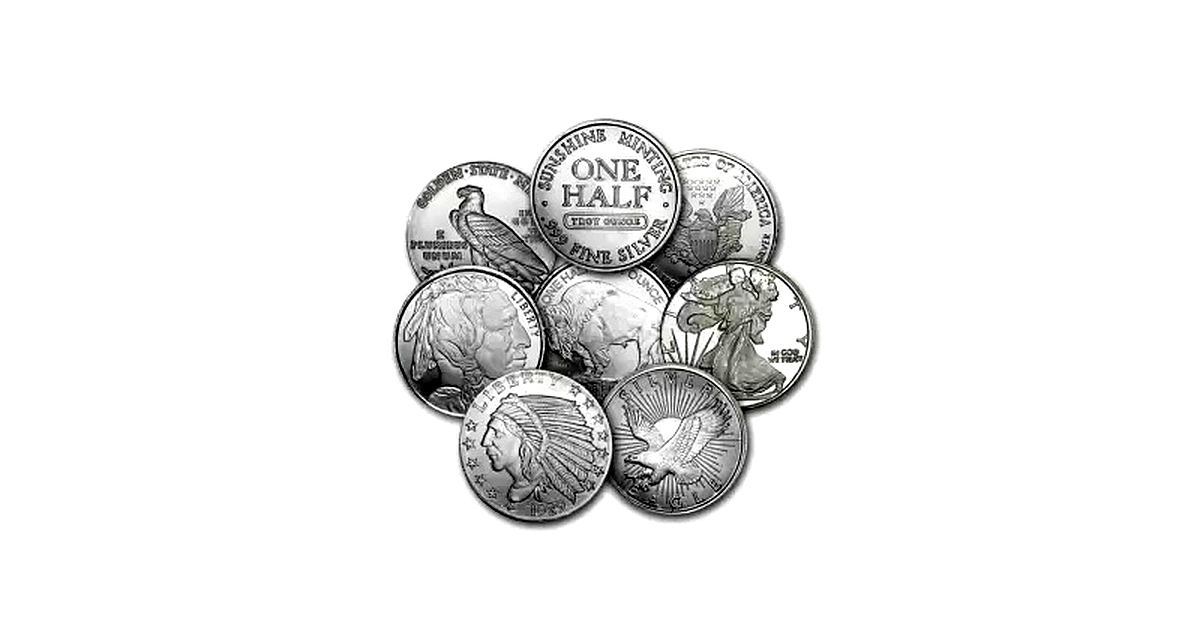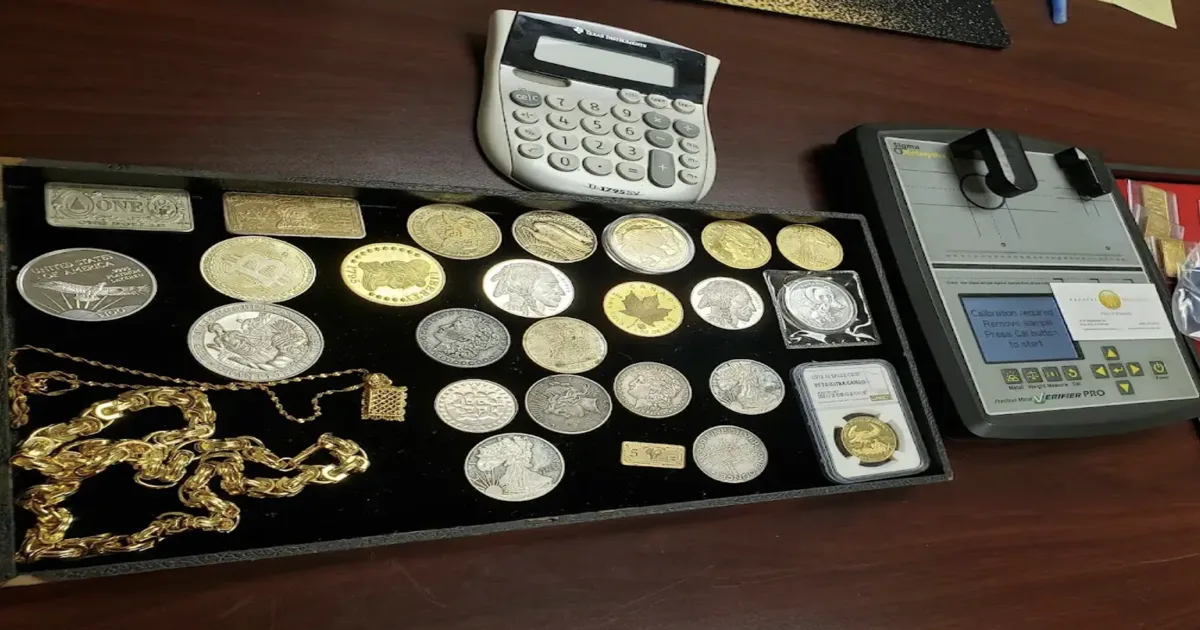
The silver spot price is the prevailing price at which silver can be purchased and sold on the open market. It is one of the most important indicators for measuring silver, as it varies with the changes in supply, demand, economic conditions, and geopolitical features. The spot price is watched by investors, collectors, and traders because it guides them in their decisions on purchasing, selling, or holding silver. It is also important to know the context in which the spot price is set to deal efficiently with silver bars, bullion coins, and other products.
What is the Spot Price of Silver?
The spot price of silver is an integral part of the precious metals business as it influences investments and even retail prices.
Definition and Meaning of Spot Price
The silver spot price equals the value quoted for one ounce of silver on an open market basis. Spot prices differ from futures contracts where prices are predetermined for future delivery. The spot price indicates the existing price of silver at that particular time.
Spot Price vs. Retail Price
While spot prices outline the base value, dealers add a premium above the base price to cover expenses incurred during minting, distribution, and profit margins. So, anyone seeking to purchase silver in forms like coins or bars will have to pay over the spot price
Why Spot Prices Matter for Investors
Investors regularly monitor spot prices. This aids them in timing their purchases and evaluating the value of their holdings. Knowledge of spot prices also aids investors in diversifying a portfolio and increasing returns in the silver market.
How is the Silver Spot Price Determined?

A wide variety of economic and market factors shape the silver spot price. Understanding how spot prices are shaped helps investors and traders make better decisions.
Key Influencing Factors
The inflation indicators and interest rates affect the spot price of silver. Other determining factors include supply and demand, mining output, investment activities, and even industrial usage intact affect silver pricing.
The Role of COMEX and LBMA
Major exchanges like the COMEX (Commodity Exchange) and the London Bullion Market Association (LBMA) set the standard for silver pricing. COMEX facilitates futures trading, while the LBMA sets the global benchmark through its daily silver price auctions.
Market Hours and Real-Time Updates
Since silver is traded worldwide, its spot price fluctuates 24/7. Trading activity in key markets — New York, London, and Asia — drives price changes. As different markets open and close, real-time updates reflect ongoing shifts in supply, demand, and investor sentiment.
Historical Trends in Silver Spot Prices
With the industrial demand alongside the economic cycles and market speculation, silver spot pricing has set itself to skew in all directions.
Major Price Movements in the Last Decade
Silver prices have significantly changed over the years. During the years of 2011, silver reached heights of approximately $50 per ounce due to inflation anxiety as well as investor demand. Prices later dropped and settled to about $15–$20 per ounce between the years 2015 to 2019. In 2020, due to the COVID-19 pandemic, prices surged past $28 as investors moved to safe-haven assets. In 2025 so far, silver spot prices are in the $32 area.
Silver’s Performance in Economic Crises
The demand for precious metals like silver increased significantly during the 2008 recession, primarily because investors turned to them for financial security. Silver also tends to retain its value during inflationary periods, making it an attractive asset to hedge against currency devaluation.
Comparing Silver’s Growth to Other Assets
While silver is much more volatile than gold, it outperformed during market turbulence. In comparison to stocks, silver tends to appreciate during turmoil but stagnates in long-term growth. Unlike other commodities like oil and copper, silver has combined functioning as an industrial metal and investment enabling it great market flexibility.
Factors Affecting Silver Spot Prices Today
Understanding the factors that affect silver prices helps investors anticipate price movements and make informed decisions.
Inflation and Interest Rates
The demand for silver as a store of value increases when inflation rises, just like it does for other precious metals. Higher interest rates set by central banks tend to appreciate the currency and subsequently lower the price of silver, while lower rates tend to strengthen silver’s position as an investment.
Industrial and Investment Demand
Silver is greatly used in the manufacture of solar panels, electronics, as well as medical instruments. The demand for more renewable energy results in an increase in demand for silver as well. At the same time, investor speculation on silver bullion and ETFs influence short-term prices.
Mining Production and Supply Constraints
Silver spot prices are exceedingly reliant on how much new silver is mined and minted. With the general stagnation of new mines being constructed, decreasing ore grades, and international relations in key silver countries, one could see an undersupply in the world markets. This would cause price increases.
How to Track and Analyze Silver Spot Prices
Monitoring silver spot prices relative to other assets needs to be done continuously to make timely trades and investment decisions.
Best Tools for Real-Time Silver Price Tracking
A select few websites offer real-time updates on changes in silver prices. Live price charts and silver market price history can easily be found on platforms such as Kitco, Investing.com, and Bloomberg.
Technical Analysis for Silver Price Trends
Investors use technical analysis to predict silver price movements. Key indicators include moving averages (50-day, 200-day), Relative Strength Index (RSI), and Bollinger Bands to identify trends and volatility. Chart patterns like double tops, head and shoulders, and Fibonacci retracements help traders determine potential buy and sell points.
Economic Reports and Market News
Global economic reports heavily influence silver prices. Federal Reserve interest rate decisions, inflation data (CPI reports), and employment statistics impact investor sentiment. Additionally, geopolitical events, trade policies, and central bank reserves affect silver’s long-term price trends.
The Role of Pacific Precious Metals in Silver Investment
Pacific Precious Metals is a trusted name in the precious metals industry, offering investors a secure and transparent way to buy and sell silver. With competitive pricing, a wide range of products, and excellent customer service, we provide a reliable platform for silver investments.
Why Choose Pacific Precious Metals for Silver Investments
We are known for our reputation, transparent pricing, and excellent customer service. Investors benefit from real-time pricing updates, ensuring they purchase silver at fair market rates. Our knowledgeable staff helps both new and experienced buyers make informed decisions.
Silver Products Available for Purchase
We offer a diverse selection of silver investment products, including:
- Silver coins (American Silver Eagles, Canadian Maple Leafs, and more)
- Silver bars (1 oz, 10 oz, 100 oz options)
- Bullion rounds and other investment-grade silver options
Secure Transactions and Competitive Pricing
We at Pacific Precious Metals prioritize safe, secure transactions through in-store and online purchasing. Our pricing remains competitive, with low markups over the spot price, making silver investments more accessible and cost-effective.
Additional Services for Silver Investors
Beyond selling silver, we offer:
- Buyback programs for easy liquidity
- Secure storage solutions for protecting investments
- Investment guidance to help clients build a strong precious metals portfolio
For those looking to invest in silver with confidence, Pacific Precious Metals provides a trustworthy and customer-friendly experience.
Is Now the Right Time to Invest in Silver?
Silver remains a popular investment choice due to its dual role as an industrial metal and a store of value. Whether it’s the right time to invest depends on market conditions, future growth potential, and individual investment strategies.
Silver’s Growth Potential in 2025 and Beyond
Experts predict that silver prices could rise due to increasing demand for renewable energy (solar panels), electric vehicles, and healthcare applications. Additionally, economic uncertainty and inflation concerns may drive more investors toward silver as a hedge against currency devaluation. While short-term volatility is expected, the long-term outlook remains strong.
Long-Term vs. Short-Term Silver Investment Strategies
- Long-term investors see silver as a hedge against inflation and economic downturns, holding it for years as part of a diversified portfolio.
- Short-term traders capitalize on price swings, using technical analysis and market trends to buy low and sell high. Both strategies depend on risk tolerance and financial goals.
Making an Informed Decision
Investors should track silver prices, monitor economic indicators, and stay informed on market trends. Working with reputable dealers like us at Pacific Precious Metals ensures transparent pricing, secure transactions, and expert guidance. Whether for long-term wealth preservation or short-term gains, silver can be a valuable addition to an investment portfolio.










